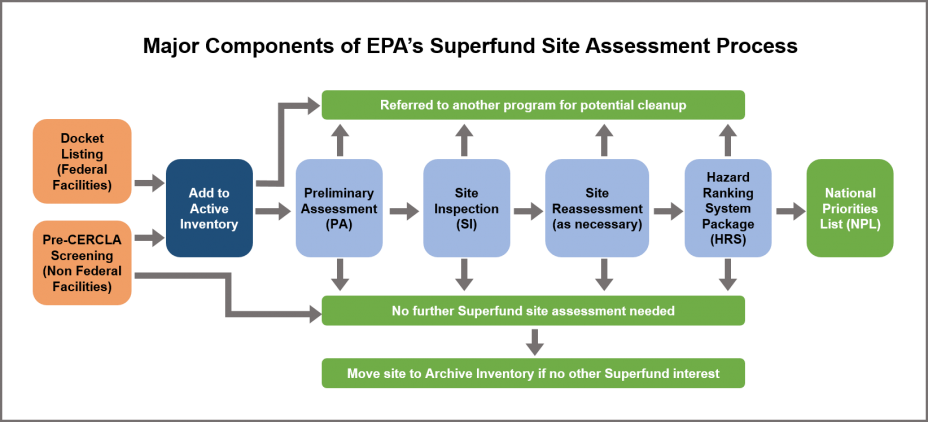Stella Township PFAS Contamination
On this page:
Updates
EPA participated in an October public meeting for drinking water and soil issues related to PFAS contamination in Stella. See EPA’s presentation slides (pdf) (1.4 MB).
- The Stella Township PFAS Contamination site will move forward in the Site Assessment evaluation process.
- EPA made this decision based on data from a recently completed site inspection with WDNR. Soil, groundwater, and sediment at the site have PFAS levels more than three times the background levels, or typical levels found in the area.
- Visit the link to the complete site inspection (pdf) (305 MB).
- The next step is to continue evaluation under the Expanded Site Inspection stage (also known as a Site Reassessment in the figure). This evaluation will address data gaps for a possible Hazard Ranking System Package.
What is the Current Site Status?
EPA will continue evaluation of the Stella Township PFAS Contamination Site under the Expanded Site Inspection stage (also known as a Site Reassessment). This evaluation will address data gaps for a possible Hazard Ranking System Package.
Assessment Process
Superfund site assessments evaluate site conditions to identify appropriate responses to releases of hazardous substances to the environment. During this process EPA, states, tribes and other federal government environmental programs collect data to identify and evaluate hazardous waste sites.

Background
In the summer of 2022, the Wisconsin Department of Natural Resources (WDNR) Bureau of Drinking Water and Groundwater launched a project to understand PFAS occurrence in Wisconsin's shallow groundwater by sampling 450 wells throughout the state. Wells were selected using a process designed to obtain an even geographic distribution of wells throughout the state. The project relied on the voluntary participation of the well owners, and WDNR paid for costs to analyze the water samples.
PFAS Sampling in Private Wells
During this study, sample results from a private well in the Town of Stella, Oneida County, indicated high levels of PFAS compounds in the water. Because of this result, WDNR, in consultation with the Wisconsin Department of Health Services (WDHS), offered free PFAS sampling to nearby private well owners. This additional sampling provided WDNR with more information to understand the extent of contamination in the area and private well owners with information about the concentrations of PFAS compounds in their drinking water. This additional sampling found other drinking water wells with high levels of PFAS contamination. In summer 2023, WDNR requested the site be evaluated under the EPA Superfund Site Assessment process.
Since 2022, WDNR has sampled surface water, fish, deer tissue, wastewater, and residual solids. More information about sampling and results is available on WDNR’s website.
What are PFAS?
PFAS, or per- and polyfluoroalkyl substances, are a large group of human-made chemicals, commonly used in commercial and industrial goods. PFAS break down very slowly over time. Exposure to some PFAS in the environment is linked to harmful health effects in humans and animals, such as increased risk of some cancers and developmental effects.
Site Contacts
Community Involvement Coordinator
Amelia Holcomb (holcomb.amelia@epa.gov)
(312)-886-6242
EPA National Priorities List Coordinator - Wisconsin
Erica Aultz (aultz.erica@epa.gov)
(312)-353-7209
